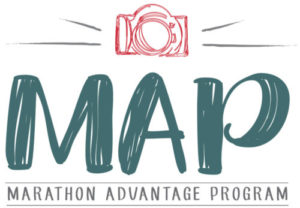For a laidback California girl, who centers her life via daily yoga sessions, Heather Lussier didn’t waste any time getting serious about building a photography business . . . once she clarified her vision. Although she had studied photography over 20 years ago and had created a fan base with her lifestyle photography among friends and family, it took a visit to PPA’s 2008 Imaging USA convention and a program by Vicki Taufer to inspire her with a new direction for her life, which was at an important turning point. Recently divorced and raising her son, Max, Heather began to visualize life as a photography studio owner: “Almost immediately I was struck by how right the vibe would be to have a studio on Main Street Los Altos,” she recalls.
Although she had no intention of opening a photography studio immediately, Heather decided to take a drive down Main Street, where she found herself in front of the only downtown store for rent. It was perfect! Once she was able to negotiate the rent down to a level that seemed doable, she signed a lease. “In one week, I went from not considering a retail space to going for it,” she says.
“It was amazing how everything fell into place,” Heather recalls. Everything, that is, except for clients!
“Like most new business owners, I thought that if I put up my sign, people would come.”
Fortunately, Heather had attended enough educational events to recognize that nothing would change unless she did some serious photography marketing.
“I’m not proficient in design, and I knew I couldn’t do it by myself. After attending Marathon’s Make Money Now Workshop in Orange County, the photography Marketing Advantage Program made perfect sense.”
It didn’t take long until she had some branding materials and a coordinating website in place, a baby plan developed, and customers coming through the door.
By 2010 Heather was ready to launch Posh Pet Portraits as a “business within a business.” Because she wanted to make a big statement about this new enterprise, she had Marathon create a separate website for the pet photography business, and she began developing pet photography marketing pieces through the MAP Program. Her first 25 pet photography clients came via her version of Vicki Taufer’s “Dog Days of Summer” promotion. When a newly built animal hospital invited Heather to decorate their spa-like interior with large pets canvasses that embraced and enhanced the color palette of the public rooms, Heather’s Posh Pooch brand gained a tremendous boost. This year, a Groupon promotion helped to create community buzz and introduce her business to new clients, whom Heather was able to easily upsell from the promotional offer.
Even though business is booming, Heather still sees room for expansion and is considering the addition of a boudoir brand. In the face of this growth, she is pleased that being a photography studio owner still leaves her with plenty of time to be a mom.
“The best part of this business is that it’s given me a flexibility with my personal life that I could never have if I were working a regular job.”

